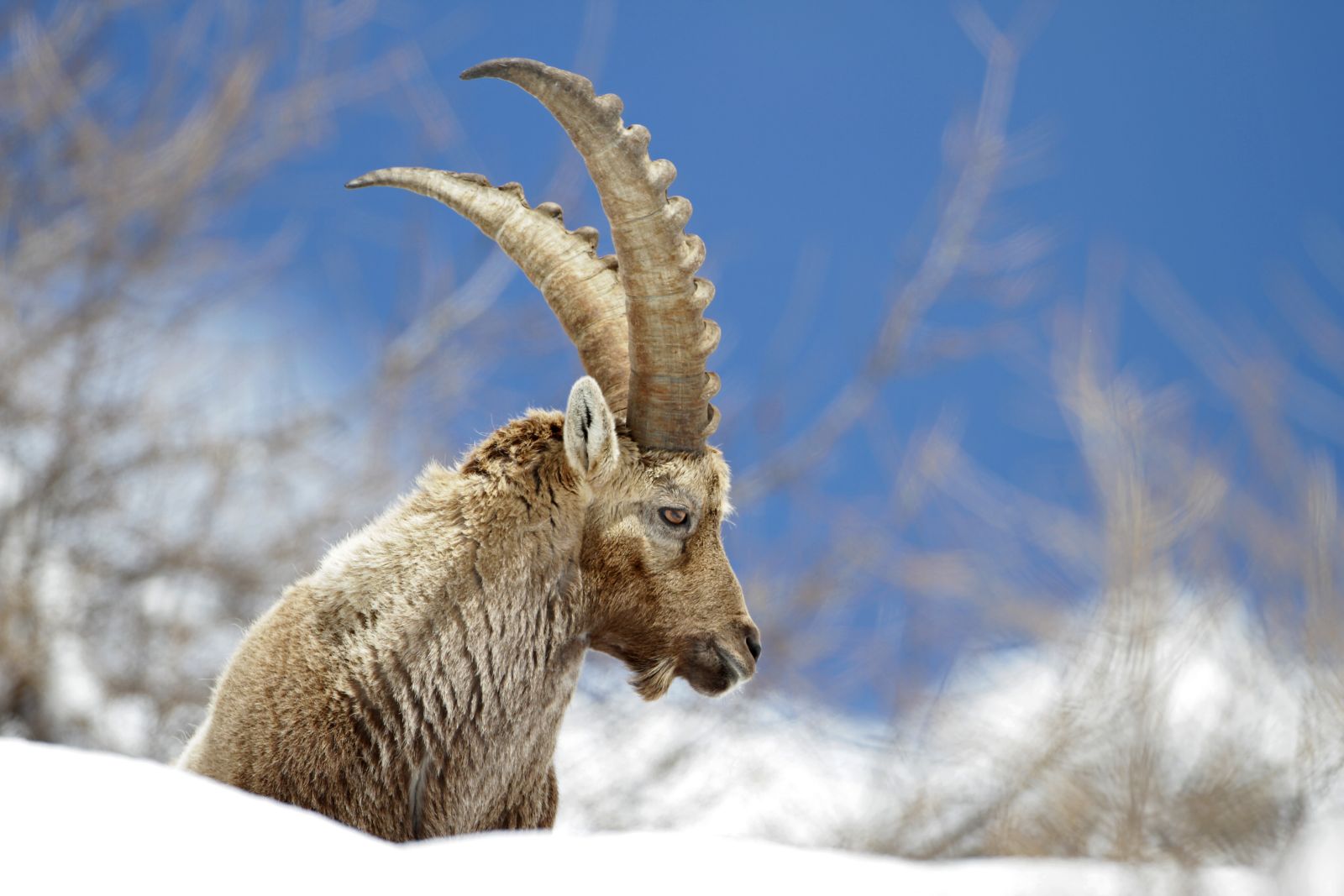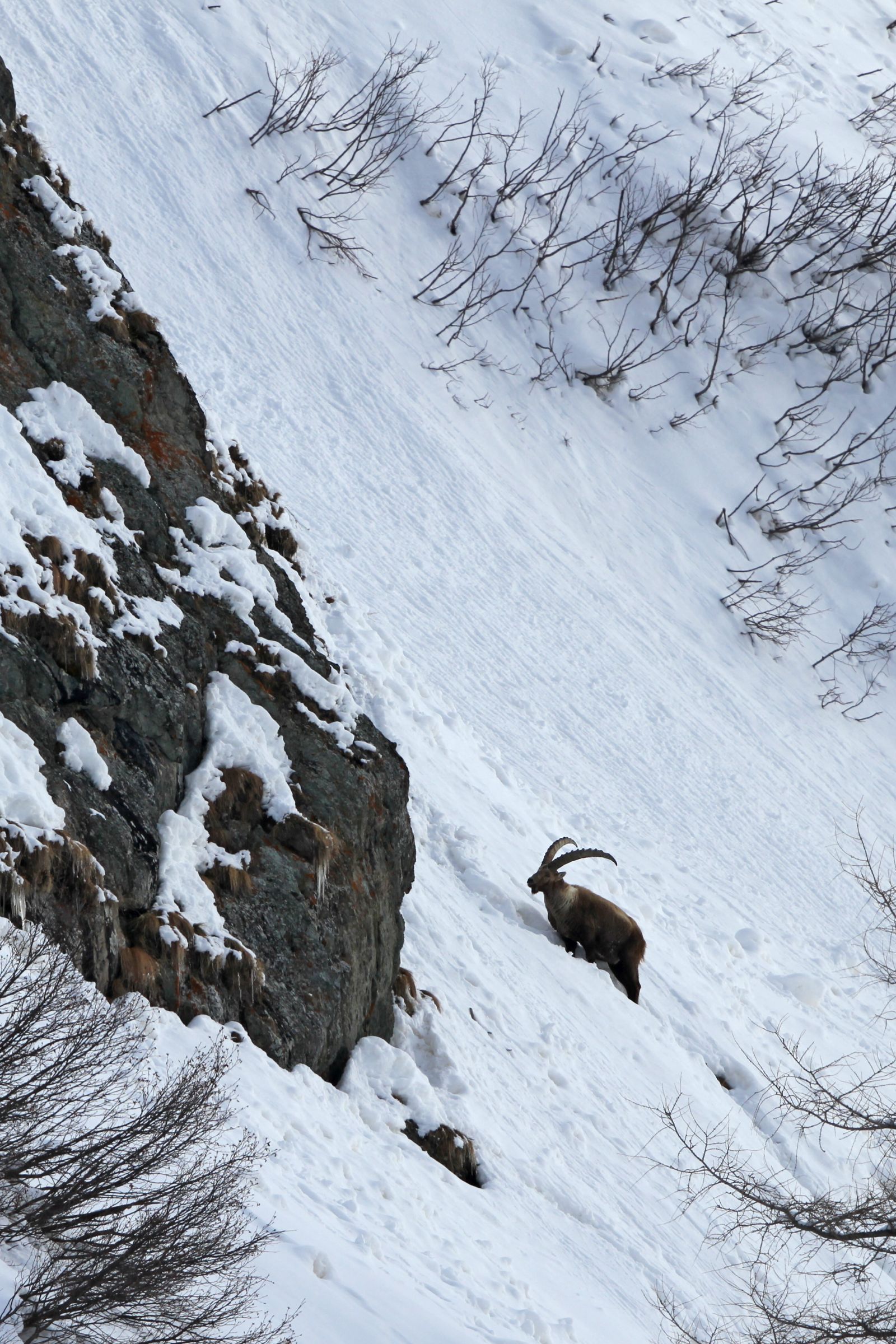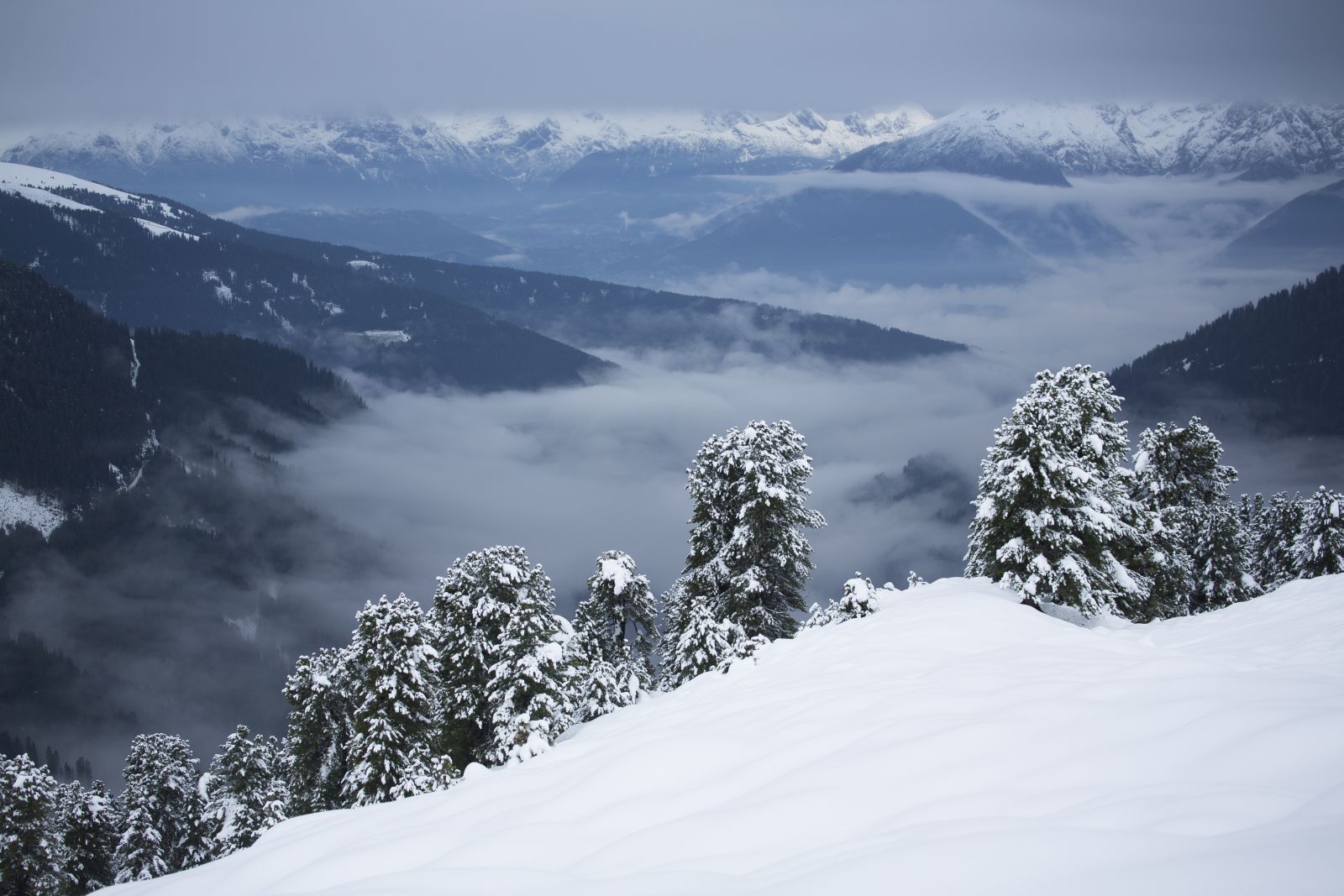It’s absolutely freezing - once again you have far too little to wear - you haven’t been able to feel your toes for ages and your fingers are icicles - every movement is twice as strenuous as normal. This is what it’s like for the ibex and chamois in winter - rapid flight in deep snow is impossible with chilled limbs.
Specific characteristics - lifestyle in winter
Ibex and chamois behave in winter almost as reptiles and lower their metabolism to burn body fat as energy-efficiently as possible, and their pulse rate drops to half of the summer level. Most of the day in winter, the animals remain largely motionless without disturbance in shelters protected from the wind. In the morning they seek out the closest accessible exposed areas where the first rays of sunshine fall. There they slowly warm up in the sunlight and begin foraging. Later in the morning and at midday they rest and absorb more warmth. In the afternoon they then reach their actual functioning temperature and graze.
In winter the animals’ movement and activity obviously reflect the ability of their muscles to function. The animals may want to flee when disturbed - but cannot do so quickly.
The consequences of being disturbed
There is a limit for the ibex to be able to sustain energy-consuming flight and, when its body temperature falls, it is often not able to at all. The consequences can be even more severe if being disturbed prevents the nocturnal lowering of its body temperature, because animals forced to take flight too often no longer dare reduce the blood supply to their extremities and thus their ability to flee – an obvious concern.
In this context animal retreats make an important contribution to habitat protection because they protect the wildlife from being disturbed in winter, which they need to be able to maximise their energy-saving potential.
Code of Conduct:
| Animal species | Peculiarities | To be observed: |
| Chamois | Live on steep sunny terrain where the snow slides off and flee to adjacent rocks is possible; are particularly sensitive if someone approaches them directly at high speed; sensitive to noise | Do not approach them from above directly or quickly; do everything you can bypass obvious animal retreat areas; no unnecessary noise |
| Ibex | loves snow-free, south-facing, rock-strewn terrain; flee only very slowly | hardly any overlap with ski tours |
| All types of game | Active at dusk | If possible never tour at dusk and in all cases keep to forest roads and ski slopes. Observe local ski slopes rules! |
Tyrolean Ski and Snowboard Tour Plan
We have worked intensively with environmentalists, hunters and conservation experts to draw up the Tyrolean Ski and Snowboard Tour Plan to investigate the impact of ski and snowboard tours on flora and fauna in the mountains.
If you need any further information about the protected sites and species and want to know how we came to choose them, you'll find all the basics in the Tyrolean Ski and Snowboard Tour Plan below, which is available for downloading.










